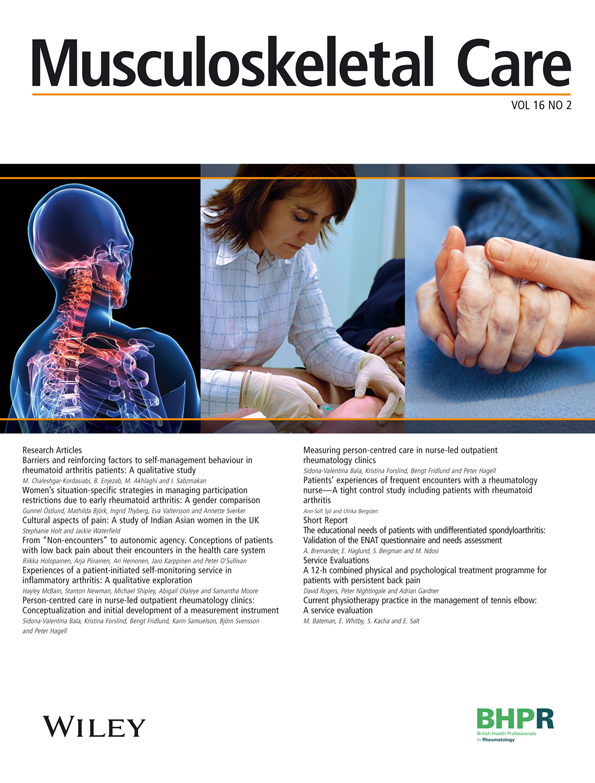Current physiotherapy practice in the management of tennis elbow: A service evaluation
Abstract
Background
Tennis elbow is a common painful condition that may affect daily function and ability to work. Physiotherapy is the most commonly used primary intervention but there is a wide range of treatment options within the umbrella of physiotherapy. Our aim was to report on the treatments that are currently used by physiotherapists in a UK National Health Service (NHS) setting.
Methods
A retrospective service evaluation was conducted at two NHS hospital trusts by reviewing patient attendance records over a 1-year period. All patients with tennis elbow were included, except those referred for postoperative rehabilitation. Patient notes were analysed using a predefined assessment template.
Results
A total of 65 patient records were identified, with patients having a mean age 48 years and mean symptom duration of 5.4 months. The mean treatment duration was 64 days, over 3.7 sessions. The most commonly used treatments were education and exercise, although the type and dosing of exercise varied greatly. Passive modalities such as ice, taping, manual therapy, acupuncture and electrotherapy were still used.
Conclusions
Wide variations in treatment approaches were identified. There was no consistency in the choice of modality used, the type of exercise or the dose of exercise prescribed. The use of passive modalities and corticosteroid injections was found to remain commonplace, despite a lack of supporting research evidence. There is a clear need for evidence-based guidance for physiotherapists treating patients with tennis elbow.




